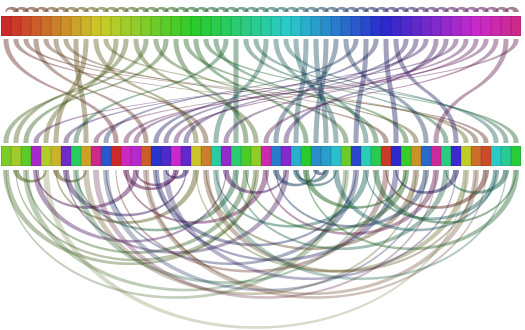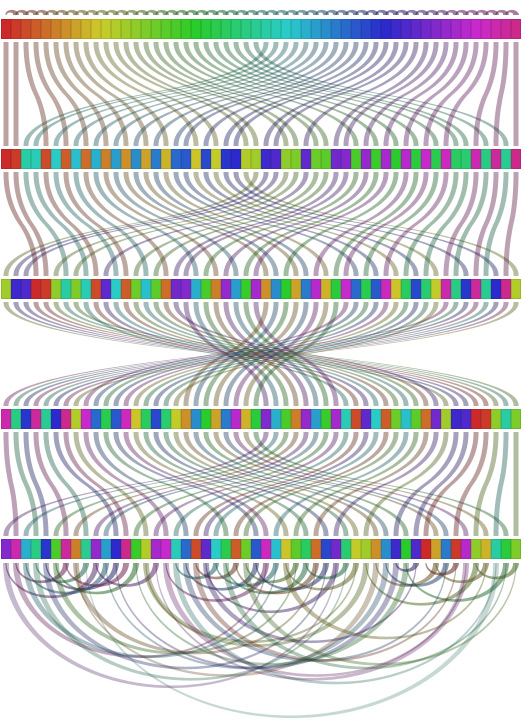Daddy needs a new pair of shoes. So, it’s off to Vegas… to win, baby! There, I’ll saunter up to a “twenty one” table, exchange a few hundred for chips, and pit my blackjack fu against the casino.
For the aspiring long-term winner – aka the advantage player – it goes something like this. First you memorize Basic Strategy: whether to hit, split, double down, or stand, based solely upon the value of your hand and the dealer’s upcard. Hit sixteen versus seven. Always split aces, never fives. Double ten against nine or less. And so on. In a single deck game, well-executed basic strategy brings you neck-and-neck with the house, advantage-wise.
Then, as seen in the movies, you learn to count cards. Statistically, a blackjack player wins the most money when the deck contains more high cards than low. And thus, the Hi-Lo system, which assigns -1 to tens, jacks, queens, kings, and aces and +1 to sixes and under. Start the count at zero after each shuffle. Add the Hi-Lo value for each card as it comes out. Bet larger amounts as the count goes positive, and the minimum otherwise. Practice ’til it’s automatic. And voilà, you’ve become a bona fide card counter, operating at one-percent advantage, ready to bring down the house at your earliest convenience.
Except for one gotcha: the casinos are wise to your action. The dealers and pit crew can count too and, by Nevada law, eject anyone for any reason. If they suspect you’ve got skills, expect to be tapped on the shoulder, escorted to the door, and launched through it.
So, as a countermeasure, you cultivate your cover. Should you look like some Silicon Valley automaton, surveiling the table and stacking chips to the count? No, probably not. A drunken rube? Flush with bravado and short on sense? Pissing away his inheritance? Yes yes yes!
Enter the shuffle, which, in an ideal world, takes an ordered deck (top) and completely scrambles it (bottom):

The colored blocks represent cards, and lines between decks show their trajectories. At the top and bottom, curves link cards that appeared back-to-back in the unshuffled deck – thin before to thick after.
Mathematicians say that it takes at least seven riffles – the two-stack interleave most people call a “shuffle” – to randomize a deck. However, while the dealer fiddles with the cards, the casino doesn’t make money, so to maximize the take, corners get cut.
From Cal-Reno blackjack trips of yore, I recall the very popular RRSR shuffle: two riffles, a strip (a series of running cuts), and riffle. Let’s simulate it with Epstein’s card interleave odds:

At first glance, it looks scrambled. However, in the curves along the bottom, we see a disproportionate number of short links deeper into the deck: pre-shuffle neighbors, still in the same relative order, now spread apart by seven cards, plus or minus a few. By golly, what we’ve got here is a failure to decorrelate.
Now, suppose we’re watching the discard pile, and the Jack of Diamonds goes in on top of the Queen of Hearts. After the next RRSR shuffle, when the Jack of Diamonds makes an appearance, there’s a good chance that the Queen of Hearts will soon follow. And therein lies the opportunity: to track clumps, predict aces, and engage in other profitable but presumably-pointless plays that soothe the looming pit boss as they fly under his radar.
So, hi ho, it’s off to scout casinos I go.
Note that my intended antics are 100% legal and completely Kosher, based solely upon what’s visible on the table. No monkey business like marking cards, bribing the dealer, toe-actuated in-shoe computers, etc. There will, however, be lots of free drinks and color commentary.
More details after I gross the first $1,000,000 – or get dragged off to the boiler room, cuffed to a pipe, and knocked sloppy. Whichever comes first!